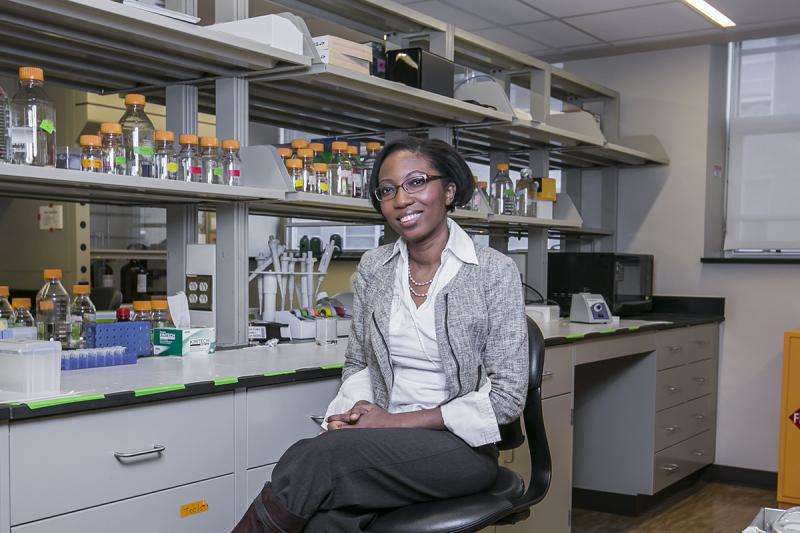Scientists tackle toxin particle capture

As lakes and waterways are threatened by end-of-summer blue-green algae that produce cyanotoxins – compounds with potent toxicity to humans and pets – a new Cornell study shows how water chemistry controls the way toxic molecules are captured by mineral particles in sediment.
"The reason we have these algal blooms is nutrient loading from agricultural runoff that goes into our waters – and this promotes the overgrowth of algae," said Ludmilla Aristilde, the study's lead author and assistant professor of biological and environmental engineering. "These algae produce microcystins, which are cyanotoxins that can cause serious damage to the liver."
Blue-green algae, or cyanobacteria, are found in many lakes and aquatic recreation areas. In the late summer, the news is filled with reports of warnings of harmful algae – which produce cyanotoxins that include highly toxic microcystins. Water contaminated with microcystins is unsuitable for swimming or for drinking-water production.
Aristilde aims to use her group's findings to improve predictions for the toxin behavior within lakes, ponds and other aquatic bodies. This particle-capturing process in the water may control whether these contaminants persist or disappear.
"Our study is specifically about how surface water chemistry and the make-up of microcystins can disrupt or promote binding of these compounds to mineral particles," Aristilde said.
Depending on the water chemistry, sediment particles – like clay minerals – that are suspended in water could potentially trap and settle cyanotoxins.
"Not only are we worried about the behavior of contaminants in the water, but now you need to be concerned about how these contaminants can be buried in sediment – or later released, if the sediment gets stirred up," she said.
The study, "Adsorption Mechanisms of Microcystin Variant Conformations at Water–Mineral Interfaces: A Molecular Modeling Investigation," was published in the August 2016 issue of the Journal of Colloid and Interface Science.
More information: Amy L. Pochodylo et al. Adsorption mechanisms of microcystin variant conformations at water–mineral interfaces: A molecular modeling investigation, Journal of Colloid and Interface Science (2016). DOI: 10.1016/j.jcis.2016.07.016
Provided by Cornell University

















